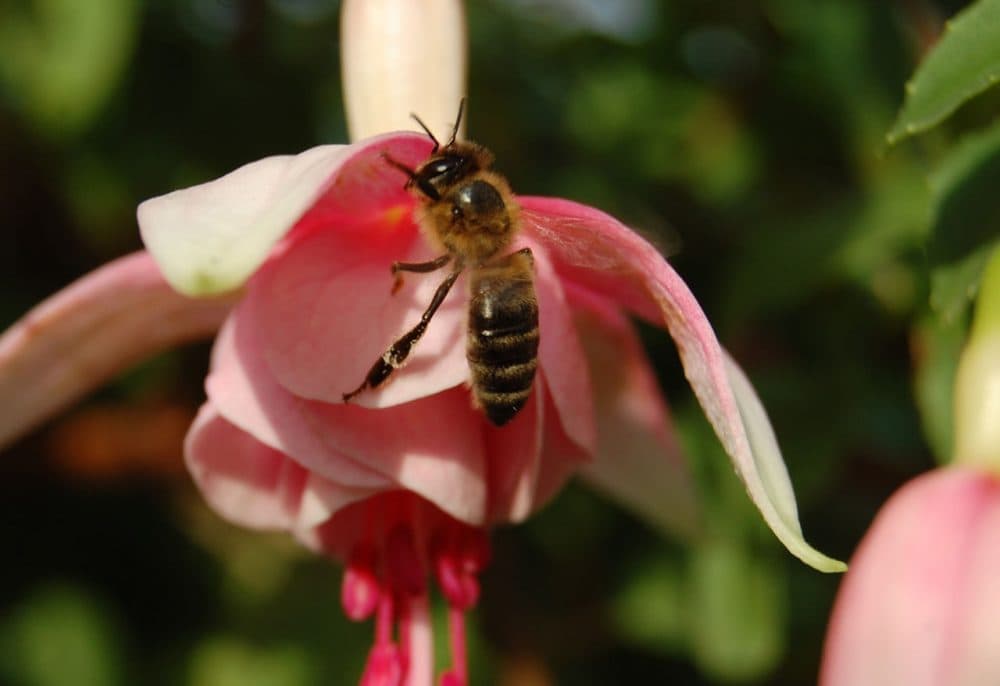Advertisement
More Bad News About Honeybees: 40 Percent Died In The Last Year
Resume
There is bad news this week about bees. More than 40 percent of American honeybee colonies have died in the past year, according to a federal survey.
That's the second-largest loss of honeybees ever recorded in a single year, according to the new report out from the U.S. Department of Agriculture. It continues a troubling trend of significant honeybee losses that has been persisting for nearly a decade now.
Here & Now's Meghna Chakrabarti talks with Steve Tilmann of the Michigan Beekeepers Association about what he's seeing, and about the environmental and economic impacts of honeybee loss.
Interview Highlights: Steve Tilmann
On what's been happening to his bee colonies
"The previous winter I lost all of my colonies - 18. So last summer, I had to start over again. Given the fact that we're starting from scratch, and I'm not alone in that situation, we were able to build up our colonies to about 11 colonies going into the late summer, early fall last year. We had some loss before the winter set in, and of the 11 colonies, I believe right now I have one that's surviving."
"Sometimes the bees, like in the colony class disorder, they're physically gone, there's nothing there. In other instances, some of the bees still remain in what we call the winter cluster in the hive, but they all perished, they're not alive. And you just have to start over again."
"There's a series of things that are happening that are all coming together at once."
On why all the honeybees are disappearing
"It appears as if it's sort of like the perfect storm coming together. There's a series of things that are happening that are all coming together at once. Some of them have to do with a parasite on the bees, which are called varroa mite. There's, of course, the widespread use of neonicotinoids on the farming crop. That is a pesticide. It's used in seed coating. It's systemic, which means incorporated in the plant. Something like 98 percent of corn and soybeans planted in North America are treated with this pesticide. You can't get around it. And there's some pretty good mounting evidence that exposure to this definitely affects the bees. And then also we're seeing an influx of pathogens and diseases that weren't here in North America before. And all of these things are sort of coming together to create problems that the beekeepers are currently having."
"As honeybees go, so do all the other pollinators because they're all feeding on the same food base. So the bumblebees and the native pollinators that are out there are also affected. The problem is that nobody pays attention to them as we do the honeybees. Honeybees are a managed animal."
Guest
- Steve Tilmann, treasurer of the Michigan Beekeepers Association.
This segment aired on May 15, 2015.